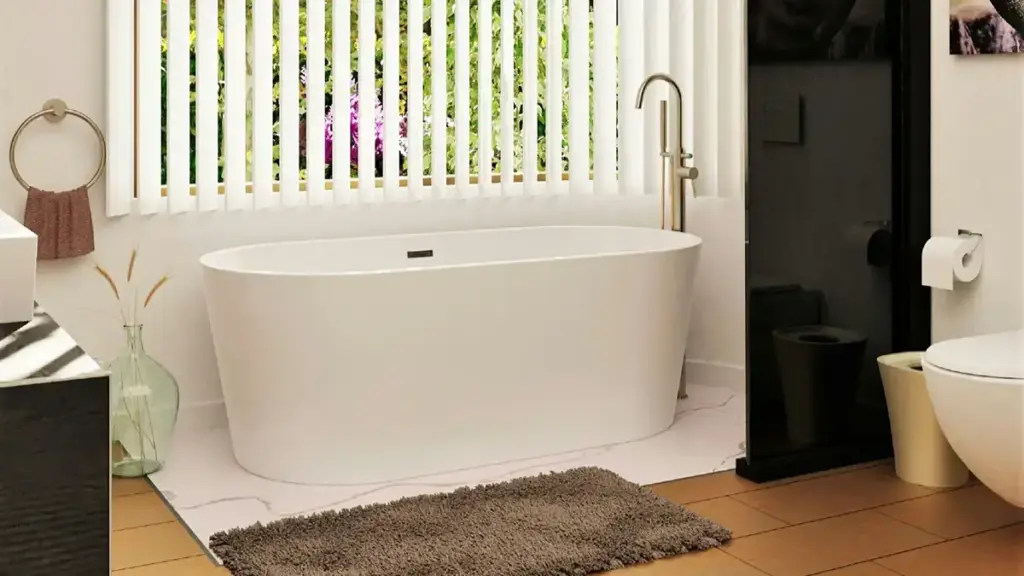Bathtub rust stains can ruin the overall appearance of a bathtub, leaving unsightly reddish-brown marks that are often difficult to remove. If you’ve noticed rust on the bottom of the bathtub, around the drain, or along the edges, you’re not alone.
Rust stains not only affect the look of a bathtub but also weaken its structure over time. In this comprehensive guide, we will explore the rust formation, how bathtub materials and water quality contribute to it, and the best removal techniques to keep your tub looking new.
The Science Behind Rust Formation
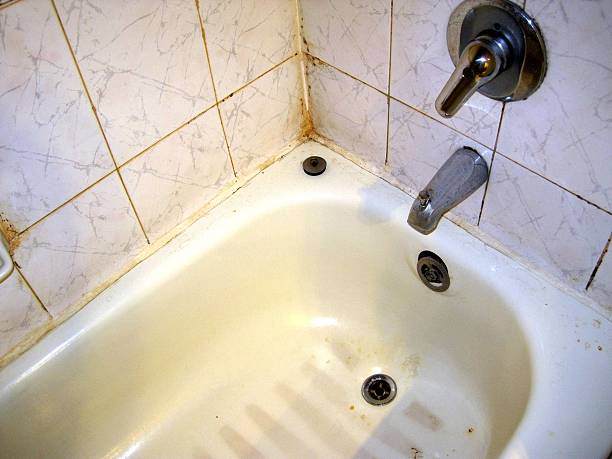
Definition of Rust and Its Chemical Causes
Rust, scientifically known as iron oxide, forms when iron reacts with oxygen and water. This chemical reaction is known as oxidation, and it causes metal surfaces to corrode over time. The presence of moisture speeds up this process, which is why bathtubs, frequently exposed to water, are susceptible to rust if they contain metal components.
How Rust Affects Bathtub Materials
Rust is more than just an aesthetic problem—it can weaken the bathtub’s structure. If left untreated, rust can lead to holes, leaks, and further damage that may require costly repairs or complete bathtub replacement. Even bathtubs made from non-metal materials, such as acrylic or fiberglass, can develop rust stains if exposed to water with high iron content or if metal objects are left sitting in them for long periods.
Common Bathtub Materials and Their Susceptibility to Rust
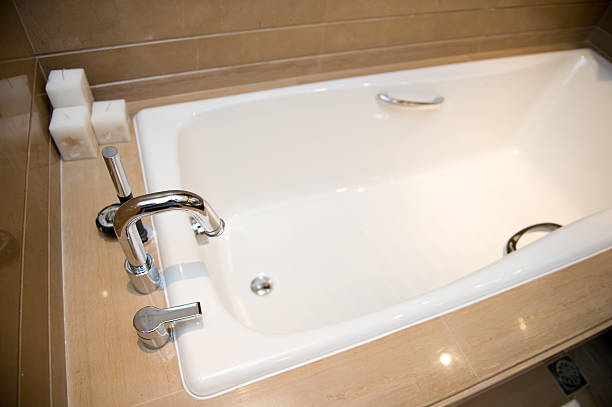
Not all bathtubs rust the same way. The material of a bathtub determines how vulnerable it is to rust stains.
Cast Iron Bathtubs
Pros and Cons
Cast iron bathtubs are extremely durable, heat-retentive, and provide a luxurious bathing experience. However, they are highly prone to rust if not properly maintained.
Why They Rust Easily
Cast iron bathtubs have a porcelain enamel coating that protects the metal underneath. However, once this coating chips or wears away, water reaches the iron surface, leading to rust. This is why older bathtubs or bathtubs with visible chips and scratches are more likely to develop rust stains.
Steel Bathtubs
Strengths and Weaknesses
Steel bathtubs are lighter and more affordable than cast iron, making them a popular choice. However, they are still susceptible to rust if the protective enamel layer gets scratched or cracks.
Rust-Prone Nature
Steel bathtubs can develop rust on the bottom of the bathtub if standing water remains for long periods, especially in homes with hard water. Scratches from abrasive cleaners or dropped objects can also expose the underlying steel, making it vulnerable to rust.
Acrylic and Fiberglass Bathtubs
Pros and Cons
Acrylic and fiberglass bathtubs are rust-resistant, lightweight, and easy to install. They do not contain metal, so they won’t rust internally.
Their Rust Resistance
Even though these materials don’t rust, they can still develop rust stains if metal objects like razors, cans, or metal drain covers are left on the surface. Rust from these objects transfers onto the bathtub, creating stubborn stains.
How Water Quality Affects Rust Formation
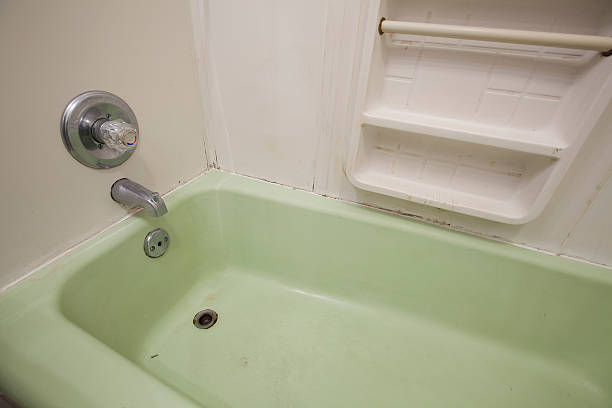
Water quality plays a significant role in the formation of rust stains in your bathtub. If your water contains high levels of minerals or iron, your bathtub is more likely to develop stubborn rust stains over time. Even if the tub itself is rust-resistant, impurities in the water can cause bathtub rust spots, making regular cleaning of glass shower doors and bathtubs essential.
Hard Water vs. Soft Water
Differences and Impact on Rust Formation
Hard water contains high amounts of calcium and magnesium, which create mineral buildup on bathtub and glass shower door surfaces. While these minerals don’t cause rust directly, they make it easier for rust stains to stick to the bathtub.
Soft water, on the other hand, lacks these minerals and is less likely to contribute to bathtub stains.
High Iron Content in Water
How Excessive Iron in Water Contributes to Rust
If your home’s water supply has a high concentration of iron, you may notice hard water rust stains in the tub. When iron-rich water evaporates, it leaves behind iron deposits that oxidize and turn into rust stains over time.
Ways to Test for Iron Levels
You can test your water’s iron levels using a home water testing kit or by consulting a plumber. If your water contains high iron content, installing a water softener or iron filter can help prevent rust stains from forming.
Surface Damage and Rust Formation
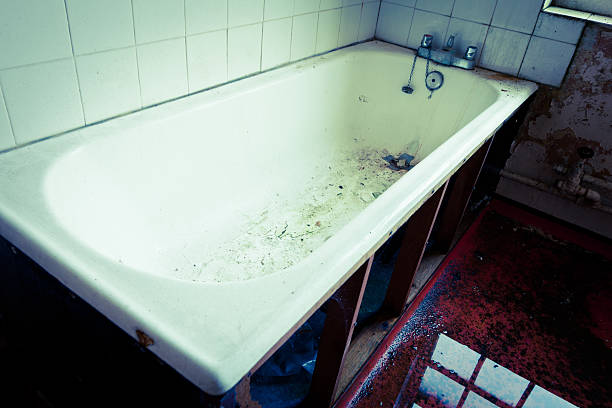
A bathtub’s protective surface serves as a barrier against rust. However, once this layer becomes damaged, rust formation is almost inevitable.
Over time, normal wear and tear, rough cleaning methods, or accidental impacts can chip, crack, or scratch the bathtub’s coating. These small imperfections expose the underlying material to moisture, allowing rust to develop.
Scratches and Cracks
Scratches and cracks may seem minor, but they can quickly become rust hotspots if left untreated. Water can seep into these openings, accelerating the oxidation process and leading to widespread rust damage. Even small chips in enamel-coated bathtubs can become entry points for rust, so it’s important to repair them as soon as they appear.
Worn-Out Protective Coatings
The enamel or acrylic coating on a bathtub is designed to repel water and prevent rust. However, constant exposure to moisture, harsh chemicals, and abrasive cleaning tools can wear down this protective layer over time. Once this happens, metal surfaces become exposed to oxygen and water, leading to rust formation.
To extend the life of your bathtub’s protective coating, avoid using highly abrasive scrubs or harsh chemical cleaners. Instead, opt for gentle cleaning solutions designed to protect the surface while keeping it rust-free.
Poor Installation and Maintenance Issues
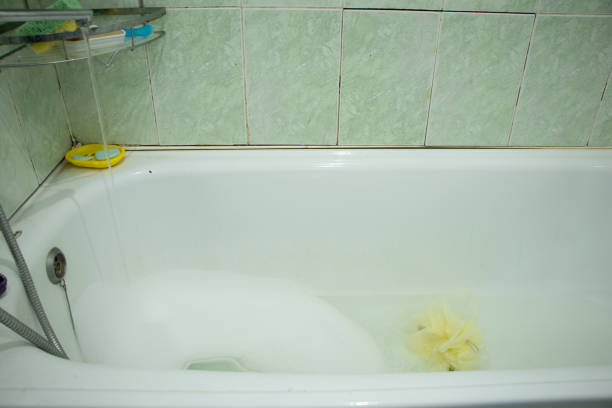
In some cases, rust stains in a bathtub are caused not by the water quality or cleaning methods but by issues related to poor installation and maintenance.
A bathtub that is not properly installed can cause water pooling, leading to rust on the bottom of the bathtub. Additionally, improper sealing and caulking can allow moisture to seep into areas where rust can develop unseen.
Incorrect Bathtub Placement
The angle at which a bathtub is installed can determine how water drains after each use. If a bathtub is positioned incorrectly, water may collect in certain areas instead of flowing towards the drain.
Standing water is a breeding ground for rust formation, especially in steel and cast iron bathtubs. Over time, rust can develop at these pooling points, making it crucial to check whether your bathtub is properly leveled.
Poor Sealing and Caulking
Bathtubs should be sealed tightly to prevent moisture from seeping into crevices. If the caulking around your bathtub begins to crack or wear away, water can leak into hidden areas, leading to rust stains that might not be visible until significant damage has occurred.
To prevent this, inspect the caulking around your bathtub regularly and reapply sealant as needed.
Impact of Cleaning Products on Rust Formation
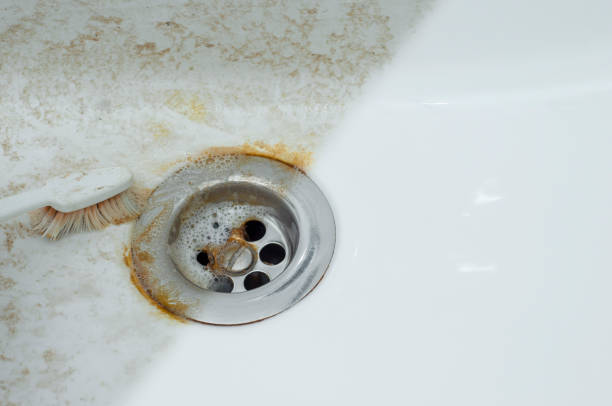
Not all cleaning products are safe for bathtubs. Some chemicals, though effective at cleaning, can accelerate rust formation by breaking down protective coatings.
Bleach-Based Cleaners
Many homeowners use bleach-based cleaners to disinfect their bathtubs, but bleach can weaken protective coatings over time. This increases the bathtub’s exposure to moisture, making it more susceptible to rust stains.
Abrasive Cleaning Agents
Powdered or abrasive scrubbing pads might seem like an effective way to remove stains, but they can scratch the bathtub’s surface, creating tiny grooves where rust can develop. Instead, use non-abrasive cleaners that are designed to remove stains without damaging the surface.
Metal Objects in the Bathtub
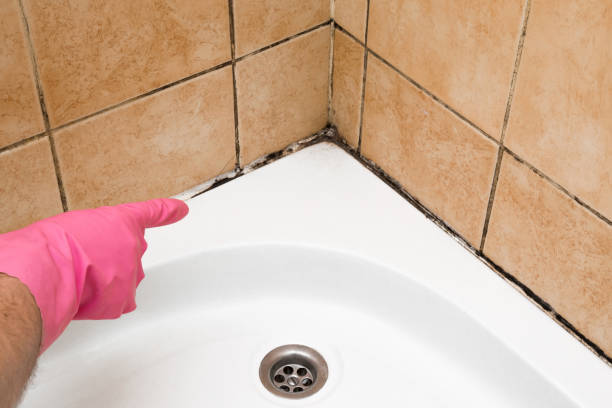
Leaving metal objects in a bathtub is one of the easiest ways to create rust stains.
Metal Containers and Fixtures
If you store metal cans, soap dishes, or shower caddies directly on the bathtub surface, they can begin to rust when exposed to water. This rust then transfers onto the bathtub, creating stubborn stains.
Razors and Other Metallic Items
Razors, bobby pins, and other small metal objects left on the bathtub’s surface oxidize quickly when exposed to water. Over time, these items leave behind rust spots that can be difficult to remove.
To prevent this, keep metal objects off bathtub surfaces and store them in dry areas instead.
Best Practices to Prevent Rust Stains
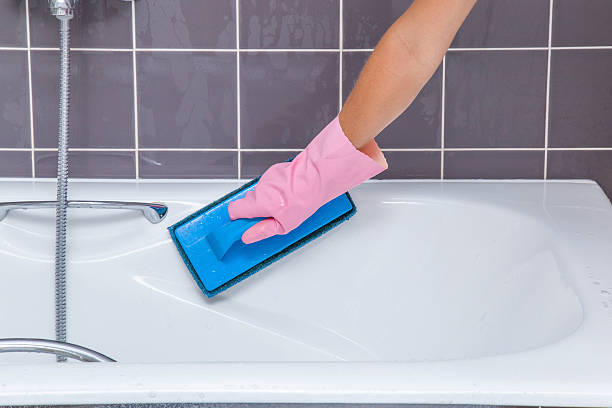
Preventing rust stains is easier than removing them. By adopting a few simple habits, you can keep your bathtub rust-free for years to come.
Regular Cleaning and Drying
After using your bathtub, wipe it dry to prevent water from pooling. Rust forms when metal is exposed to moisture for prolonged periods, so keeping the tub dry can significantly reduce the risk of rust stains.
Using the Right Cleaning Products
Choose non-abrasive and non-corrosive cleaning products to prevent damage to the bathtub’s protective coating. Products labeled as “safe for enamel” or “bathtub-friendly” are best for maintaining the surface while effectively removing dirt.
Avoiding Long-Term Contact with Metal Items
Since metal objects are a major contributor to rust stains, avoid storing razors, cans, or metal fixtures directly on the bathtub. Instead, opt for plastic or rust-resistant alternatives to prevent unwanted stains.
Conclusion
Rust stains in bathtubs are frustrating but preventable. Whether caused by rust on the bottom of the bathtub, hard water rust stains in the tub, or bathtub rust spots, understanding the root cause makes prevention and removal easier.
By following proper cleaning and maintenance practices, you can keep your bathtub rust-free and looking brand new!
FAQs
Why does my bathtub keep getting rust stains?
Rust stains in bathtubs are usually caused by prolonged exposure to water, metal components, and high iron content in the water supply. If your bathtub has metal parts (like a steel or cast iron core), it can rust if the protective coating wears away. Additionally, hard water rust stains in the tub can develop when iron-rich water leaves deposits that oxidize over time.
How do I remove rust stains from my bathtub?
There are several bathtub rust stains removal methods:
- Baking Soda and Vinegar: Make a paste using baking soda and vinegar, apply it to the stain, let it sit for 15-30 minutes, then scrub gently and rinse.
- Lemon and Salt: Cut a lemon in half, sprinkle salt on the stain, let it sit for a few minutes, and scrub with a soft sponge.
- Commercial Rust Removers: Use a rust removal product that is safe for bathtubs and follow the manufacturer’s instructions.
- Hydrogen Peroxide and Cream of Tartar: Mix into a paste, apply to rust stains, let it sit, then scrub and rinse.
What can I do to prevent rust stains from forming in my bathtub?
To prevent rust stains, follow these best practices:
- Wipe down your bathtub after each use to prevent standing water.
- Use the right cleaning products—avoid bleach and abrasive cleaners that can wear down the protective coating.
- Store razors, metal cans, and other metallic objects outside the bathtub to prevent rust stains.
- Apply a protective sealant if your bathtub’s coating is wearing down.
- Test your water for iron content and install a water softener or iron filter if necessary.
My bathtub has rust on the bottom. What should I do?
If you have rust on the bottom of the bathtub, it may be due to standing water, worn-out enamel, or hard water deposits. To remove the rust:
- Scrub the area using a paste of baking soda and vinegar.
- If the stain is persistent, try using a commercial rust remover designed for bathtubs.
- If the rust has penetrated the surface, you may need professional refinishing to restore your bathtub.
Can I use bleach to clean rust stains in my bathtub?
No. Bleach can actually make rust stains worse because it can accelerate the oxidation process. Instead of bleach, use gentle, rust-removing solutions like baking soda, vinegar, or commercial rust removers.



